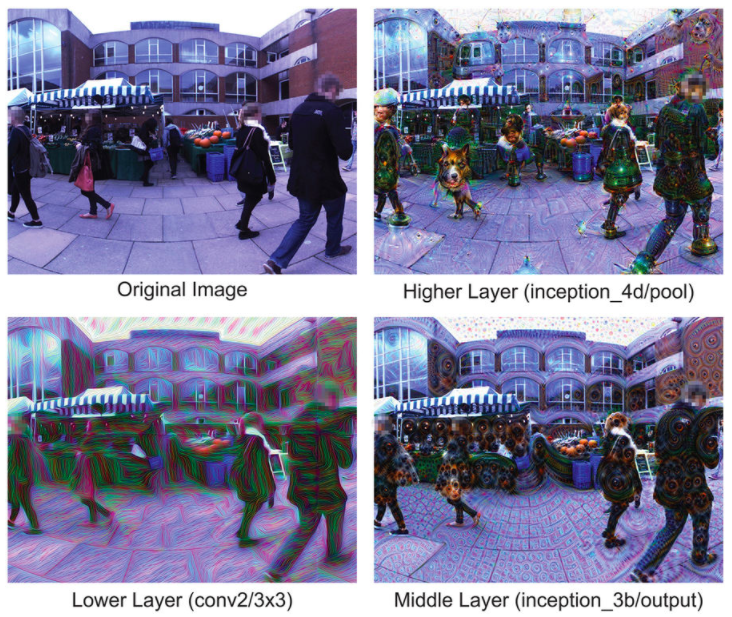Exploring the complex mechanisms that cause us to hallucinate is an incredibly tricky task. This is largely because hallucinations are usually triggered by psychotic conditions or psychedelic drugs, making it nearly impossible to isolate what really transforms our perception of reality.
Instead of getting participants to drop tabs of acid for the experiment, scientists developed a new device they call the ‘Hallucination Machine’. By pairing a modified version of Google’s open sourced DeepDream algorithm with an immersive VR experience, researchers created “biologically plausible hallucinations” — and according to science, they’re just like a mushroom trip.
Developed by researchers from the University of Sussex’s Sackler Centre for Consciousness Science, the machine turns videos of natural scenes, such as the University campus, into a “psychedelic playground” thanks to the use of deep convolutional neural networks (DCNNs).
These DCCNs are based on Google’s DeepDream algorithm: a trainable system or ‘neural net’ originally developed to detect faces and patterns in photos to automatically classify images. When an image is ‘over-predicted’ however, this creates distortion and the ‘believable’ hallucinations seen below. To add to the realistic experience, researchers decided to project these ‘trips’ through a VR headset for full-effect.

These results were compared to a previous study where participants were actually administered psilocybin (the trip-inducing ingredient of magic mushrooms).
The second experiment investigated whether the Hallucination Machine could lead participants to ‘temporal distortion’: a commonly reported aspect of altered states of consciousness that ‘warps’ your sense of time.
Results from the first experiment found the experiences induced by the machine were incredibly similar to those of someone tripping on mushrooms. The second experiment, however, found that ‘temporal distortion’ using the machine was similar to the unaltered control videos — indicating ‘time warps’ are probably reserved for psychedelic experiences.
One of the researchers responsible for the Hallucination Machine, Professor Anil Seth of the University of Sussex, explained his view about perception during an incredibly interesting TED talk earlier this year. He describes hallucination as an uncontrolled perception in which our brains are not able to ‘reign in’ the sensory information we take in from the world.
Imagine being a brain. There you are, stuck inside a bony skull, trying to figure out what’s out there in the world. There’s no light inside the skull — and no sound either. All you have to go on are streams of electrical signals, which are only indirectly related to things in the world, whatever they may be.
Seth explained, when the mechanisms for trying to predict and make sense of those electrical signals go wrong, this is when we hallucinate. He believes treating these mechanisms instead of the “symptoms” such as depression and schizophrenia could be incredibly valuable for the future of psychology and neurology.

While some may claim we know nothing about how the brain and body give rise to consciousness, I think the experts at Sussex University are definitely on to something. By creating a machine which acts in a similar way to how the human brain perceives information, we now have a tool to help us recognize the mechanisms that make us hallucinate.
Just like all the staggering discoveries us clever humans have made about life and our existence in the past, the Hallucination Machine brings us one step closer to understanding the complex mysteries of consciousness. And to be honest, that’s a terrifyingly incredible thought.
Get the TNW newsletter
Get the most important tech news in your inbox each week.





